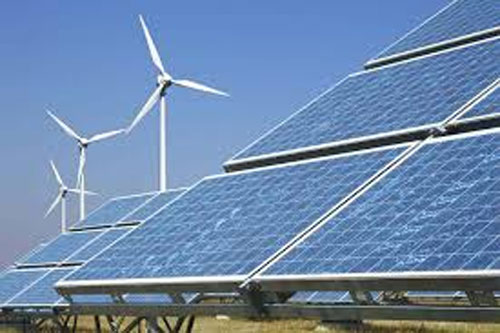Daijiworld Media Network – Bengaluru
Bengaluru, Sep 19: Karnataka has set a new record by generating 143 million units (MU) of renewable energy (RE), accounting for 80% of the state’s total power generation of 179 MU. Of this, wind energy contributed the most with 65.8 MU, followed by hydropower at 55.3 MU and solar power at 22.6 MU, according to officials from the Energy Department.
A month ago, on August 18, nearly 80% of Karnataka’s power grid was powered by green energy, the highest among all states. Despite a nearly 15% rise in average annual demand compared to last year, the present consumption was 21 MU lower, said Gaurav Gupta, additional chief secretary of the energy department.

The state’s power consumption on August 18 stood at 179.03 MU, compared to 200.35 MU on the same day last year. Peak power demand on August 18 was 9,729 megawatts (MW), slightly lower than last year’s 9,853 MW, records of the energy department showed.
Officials explained that reduced demand due to rainfall and lower temperatures limited the state’s ability to make economic use of increased production. As overall demand fell, Karnataka could not sell surplus power to the grid at higher margins. On August 18, the state sold 8.85 MU of power at Rs 4.12 per unit, earning Rs 3.65 crore.
Karnataka also supplied 6.616 MU of power to Punjab under a forward banking agreement, in addition to returning 13.43 MU per day to Uttar Pradesh and Punjab as part of existing banking agreements. This was done to balance the surplus generation, officials said.
Renewable power is not restricted to solar and wind alone. As per the central government, hydropower is now classified under the renewable energy category, explained Pankaj Kumar Pandey, additional chief secretary and managing director of KPTCL.
On August 18, the state’s total hydropower generation stood at 55.26 MU, of which 31.18 MU came from major water sources.
Energy demand in Karnataka began rising from the end of January this year. Summer demand was expected to cross 350 MU per day but pre-monsoon showers kept it between 320–330 MU. With the onset of monsoon, demand dropped to 230–240 MU per day, and now it has reached the lowest levels, officials added.
Efforts are underway to maximize wind power generation during the night and further reduce thermal loads. Work is also in progress to enhance renewable energy storage capacities, said Gaurav Gupta.